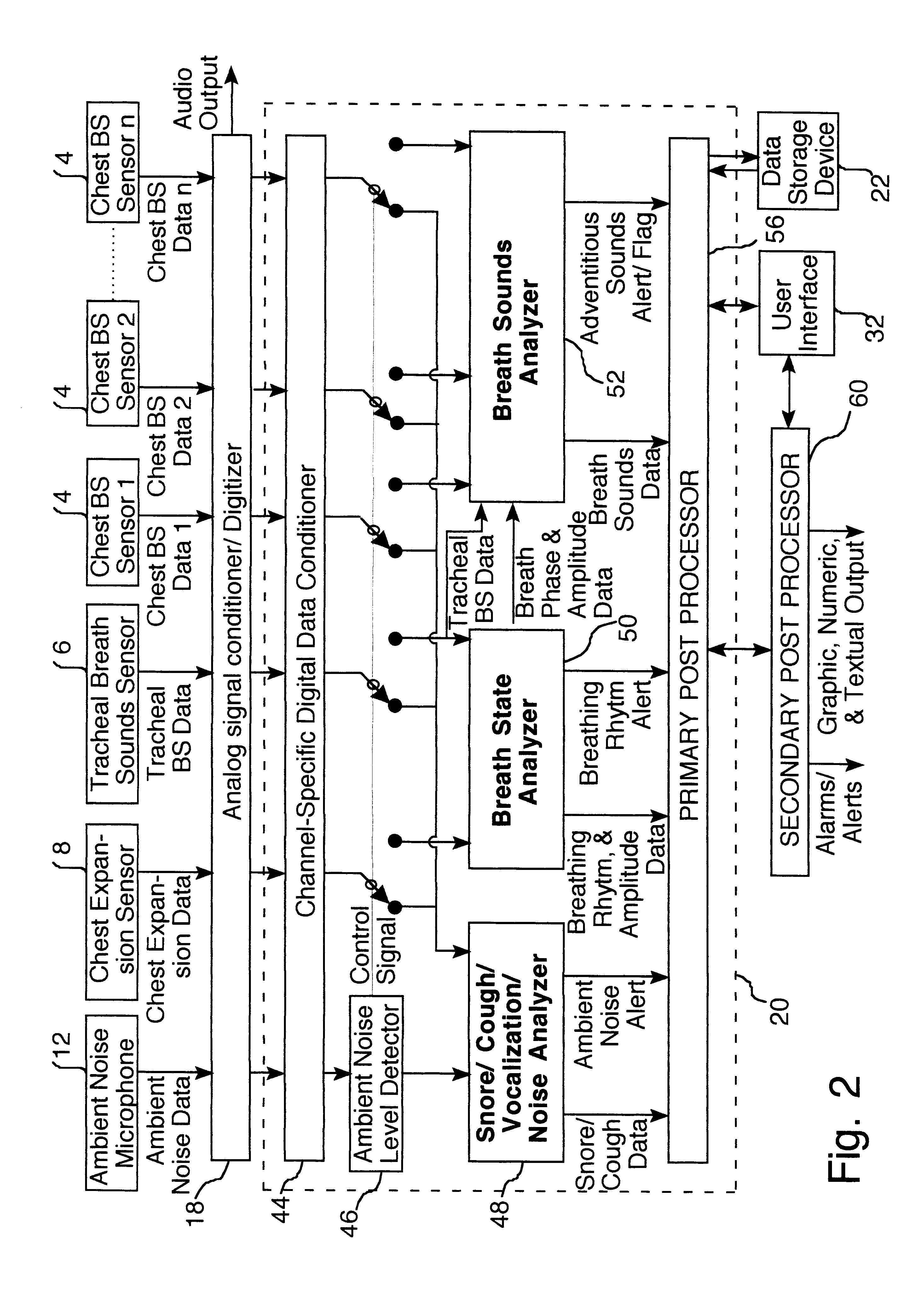Phonopneumograph system
a phonograph and phonograph technology, applied in the field of phonograph systems, can solve the problems of time-consuming and labor-intensive methods involving manual analysis of visually displayed digitized waveforms, lack of objective and uniform criteria for quantitative identification of adventitious sounds, and time-consuming analysis methods. , to achieve the effect of reducing removing the effect of the first breath sound
- Summary
- Abstract
- Description
- Claims
- Application Information
AI Technical Summary
Benefits of technology
Problems solved by technology
Method used
Image
Examples
Embodiment Construction
The Phonopneumograph System
Reference is now made to FIG. 1 which is a schematic illustration of a Phonopneumograph (PPG) system constructed and operative for detecting, analyzing, and monitoring normal and adventitious breath sounds, documenting the results of the breath sounds analysis and recording selected portions of breath sounds in accordance with a preferred embodiment of the present invention.
The PPG system preferably includes a plurality of preferably wireless, chest, breath sound (BS) sensors 4, placed in contact with the patients skin at predetermined back and chest positions, for picking up breath sounds. The PPG system preferably also includes a preferably wireless tracheal BS sensor 6, placed at a predetermined tracheal position, for picking up tracheal breath sounds. The PPG system preferably further includes a preferably wireless chest expansion (CE) sensor 8, such as a chest impedance plethysmograph sensor, suitably attached to the patient's chest for picking up che...
PUM
 Login to View More
Login to View More Abstract
Description
Claims
Application Information
 Login to View More
Login to View More - R&D
- Intellectual Property
- Life Sciences
- Materials
- Tech Scout
- Unparalleled Data Quality
- Higher Quality Content
- 60% Fewer Hallucinations
Browse by: Latest US Patents, China's latest patents, Technical Efficacy Thesaurus, Application Domain, Technology Topic, Popular Technical Reports.
© 2025 PatSnap. All rights reserved.Legal|Privacy policy|Modern Slavery Act Transparency Statement|Sitemap|About US| Contact US: help@patsnap.com



